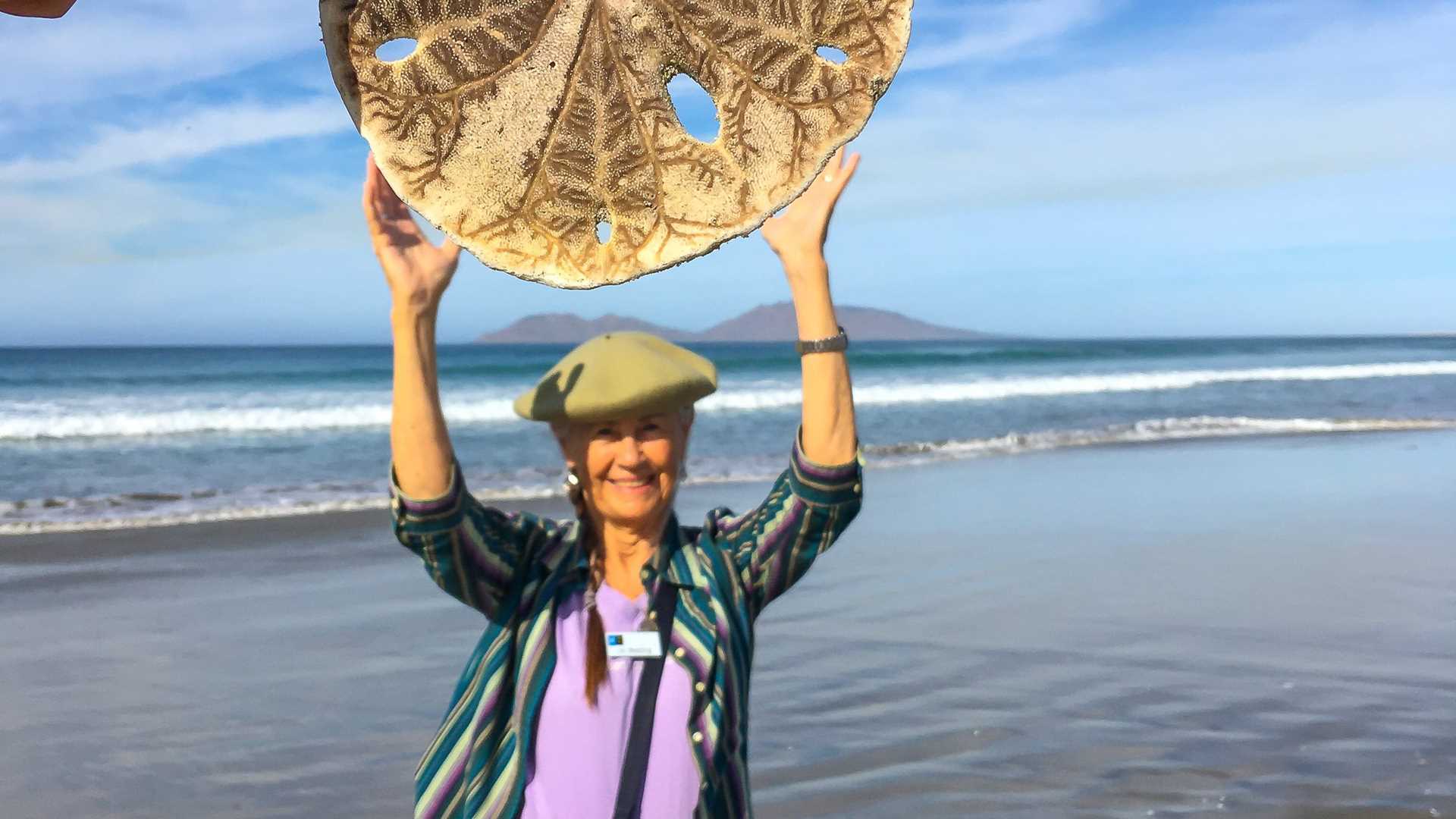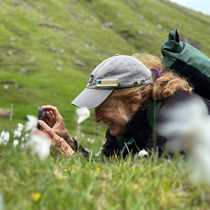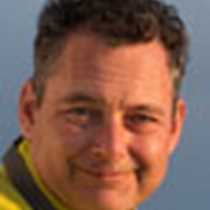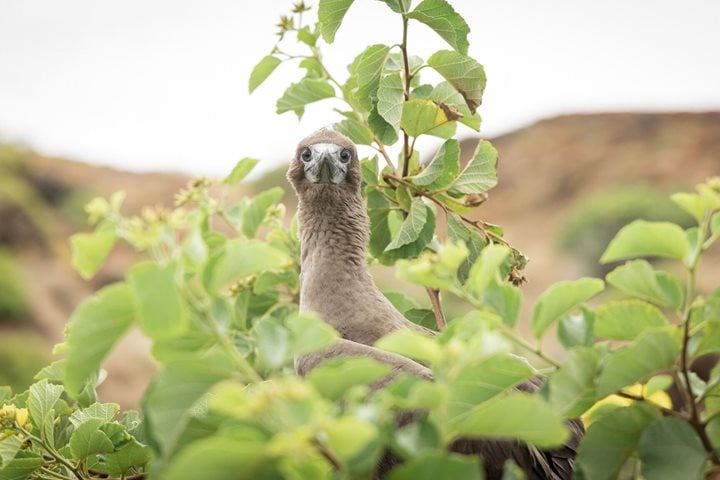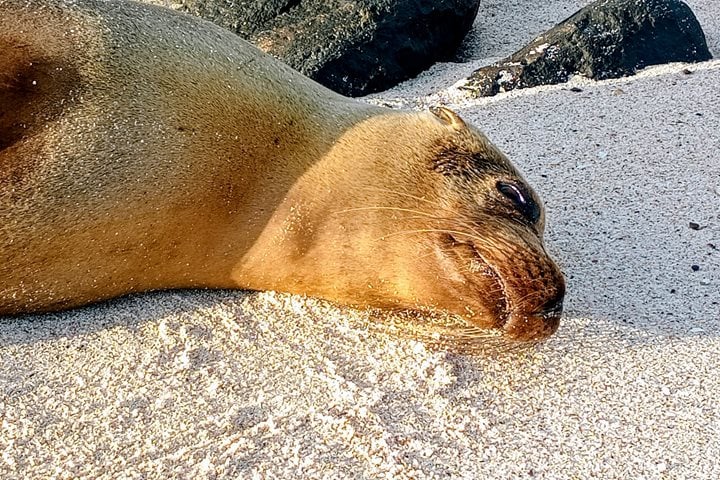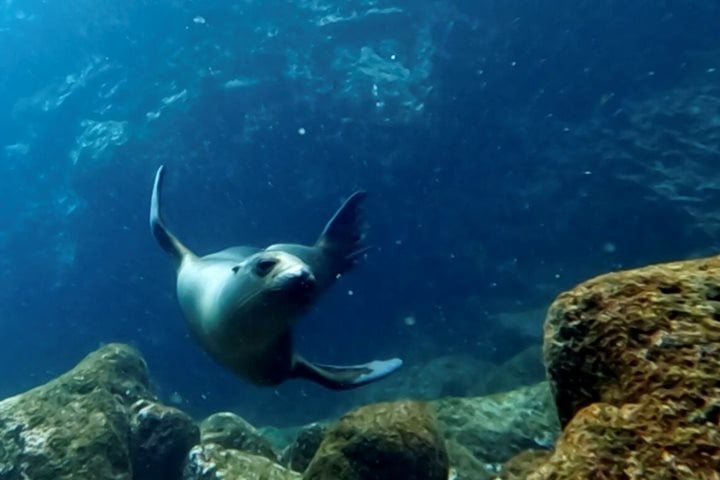Our photo walk quickly degraded into a shameless “texture fest,” according to our video chronicler, Dexter Sear. What does this mean? As we explored the dunes of Isla Magdalena this morning, we observed rippled textures, animal tracks, shell middens and windblown plant circles. We are accustomed to noticing color, hue and tint in nature, but the contrast of smooth slip face and barchan horns made us think about texture, shapes and ephemeral sculptures.
Low morning light created shadows in the tracks left by the nocturnal creatures, making the footprints stand out. Our track sightings included coyotes, shorebirds, mice, jackrabbits and the treasure of the day, a ringtail cat. The ringtail cat is not actually a cat; ringtails are in the same family as raccoons. Ringtails are nocturnal, and they eat insects, lizards, small birds and fruit. We used plaster of Paris to cast the tracks. Later, we shared our castings with guests aboard National Geographic Sea Bird.
During the afternoon, we navigated north towards Boca de Soledad. We followed the sinuous, mangrove-lined shore of Isla Magdalena toward the gray whales of tomorrow.

